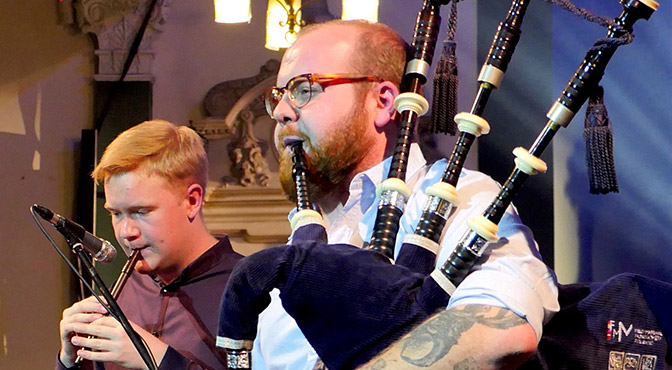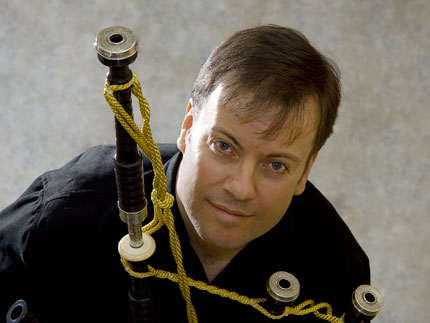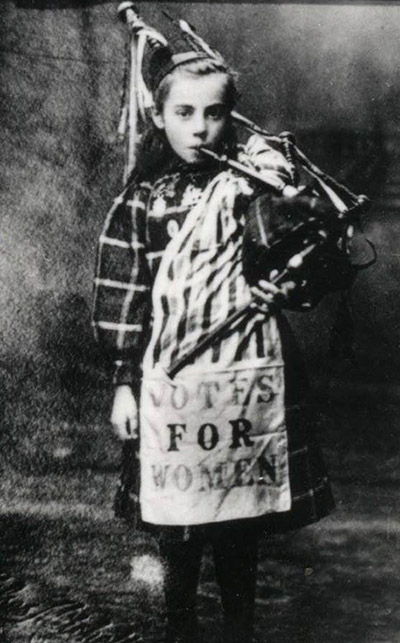
Calum MacLean has commented on the WW2 pipes story we’ve been running. If you haven’t seen his post, Calum wrote: ‘I have a set of Lawrie bagpipes with the engraving: ‘THE GIFT OF THE ASSOCIATION OF HIGHLAND SOCIETIES OF EDINBURGH 1939’.
‘I wonder if these are WW2 bagpipes as well. I have seen another set with the same engraving on the chanter stock which were Lawrie bagpipes as well. I wonder why this Association had these sets of pipes made and all in the same year?’
I think the pipes were for Army pipers Calum. There would not be many PoWs in 1939 I don’t think, so I am assuming the pipes were supplied to help the growing number of regimental pipe bands that would have been formed immediately after and during mobilisation. This generosity was then extended to PoWs as the earlier story mentions. I know next to nothing about this Association and would be grateful if anyone with additional information could forward it.
 One positive thing to come out of the recent SPJA shenanigans and the ‘sore arm gate’ affair is a new tune from prolific Canadian composer Michael Grey (pictured). Mike reminds us all not to take ourselves too seriously with a new tune he’s written for ‘Inspector Clueless of Gayfield’.
One positive thing to come out of the recent SPJA shenanigans and the ‘sore arm gate’ affair is a new tune from prolific Canadian composer Michael Grey (pictured). Mike reminds us all not to take ourselves too seriously with a new tune he’s written for ‘Inspector Clueless of Gayfield’.
Mike writes on his blog: ‘There’s never any shortage of drama, indignancy or high dudgeon in the small world that is piping. I read Rab Wallace’s blog the other day and seriously LOL’d when I read his description of the officiant connected with a judge’s complaint: ‘Inspector Clueless of Gayfield’. I can’t say why, exactly, I just laughed. Maybe because it was a riff on a classic pipe tune naming convention, and, well, who knows. Gold, I say. Rab has a way with words, there is no doubt.
‘I wasn’t fully aware of Rab’s tribulations connected with the Solo Piping Judge’s Association (I can say, I am a member). And until he outed himself I wasn’t fully aware of Inspector Clueless; that is, his perspective. The good Inspector turns out to be none other than the one and only Euan Anderson of Edinburgh, bon vivant and good company. Clueless or not, this is near the highest praise I can offer any person.
 ‘All aside, I am sorry for any situation where pipers – or, I guess, anyone or any group, for that matter – clash. I’m sure calm and amenable waters are not far off. And I suppose this is all to say, I’m seizing this brazen excuse to post what I think is a new tune. And so here it is; inspired the very morning I read Rab’s post.’
‘All aside, I am sorry for any situation where pipers – or, I guess, anyone or any group, for that matter – clash. I’m sure calm and amenable waters are not far off. And I suppose this is all to say, I’m seizing this brazen excuse to post what I think is a new tune. And so here it is; inspired the very morning I read Rab’s post.’
[wds id=”2″]
Touching picture of a wee girl piper doing her bit for women’s rights:
 Don’t miss the next round of the Scots Guards KO to be held in the SG Club, Haymarket, Edinburgh, on Sunday at the usual time. Organiser Jimmy Banks writes: ‘We have our next round of the KO on Sunday 28 January, Ross Millar and Calum Watson; should be a really good session.’ Jimmy’s email.
Don’t miss the next round of the Scots Guards KO to be held in the SG Club, Haymarket, Edinburgh, on Sunday at the usual time. Organiser Jimmy Banks writes: ‘We have our next round of the KO on Sunday 28 January, Ross Millar and Calum Watson; should be a really good session.’ Jimmy’s email.
Field Marshal piper Scott Wallace, the current All Ireland Senior Solo Piping Champion, is pictured up top during the BBC recording of ‘Burns an’ Mair’ at Rosemary Street Presbyterian Church in Belfast. The Burn’s Night concert will be shown on 25th January on BBC2 at 9pm probably only in Northern Ireland. Helping with the presentation will be world-class side drummer Mark Wilson, who was also the Musical Director. The concert celebrating Burns’ musical legacy also features Alasdair Fraser (fiddle), Natalie Haas (cello), Siobhan Miller (former Scots Traditional Singer of the Year) plus a host of local musicians including Ballyclare High School Choir accompanied by piper Grahame Harris.
The BBC blurb reads: ‘Here in Northern Ireland, we are more than familiar with the major poetic works of Robert Burns. Though he has long been heralded as Scotland’s National poet, Burns was primarily a songwriter with an often-overlooked body of work containing upwards of 400 songs. He was a composer and arranger of consummate skill, a fiddle player and a song collector. This programme, made by Barking Films, celebrates Burns but not in the traditional sense with an ‘Address to a Haggis’ and ‘Auld Lang Syne’, delving instead more deeply into the musical world of Robert Burns, and the writers and performers his work inspired.
‘Burns had a lifelong passion for music and made a major contribution to ‘the Scots Musical Museum’. Published in the early 1800s, this collection of folk songs played a pivotal role in the preservation of Scotland’s song tradition. As well as a collector, Burns was an innovator who re-wrote and reshaped many of the songs and tunes he included in this publication.’
[wds id=”3″]




















Recent Comments